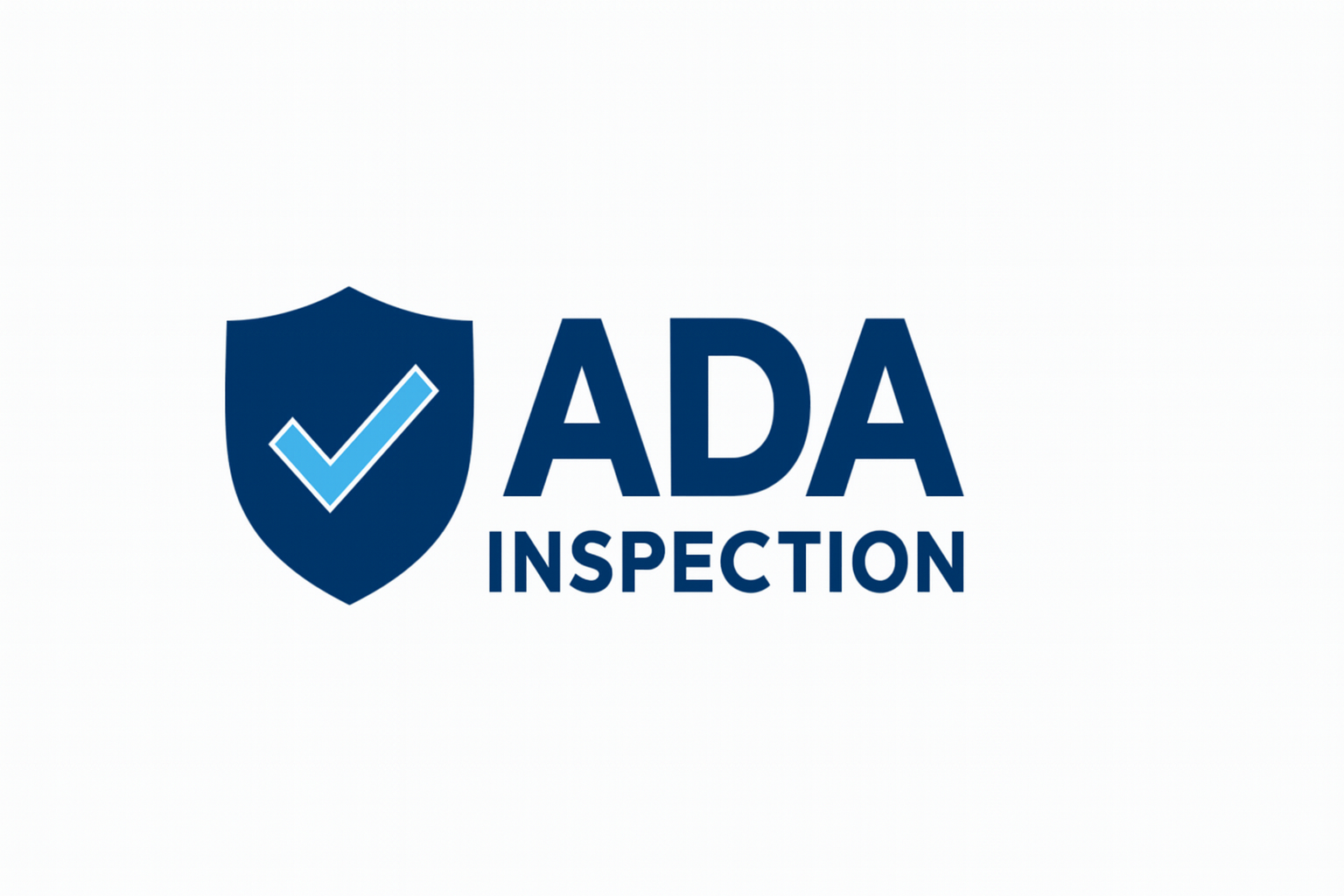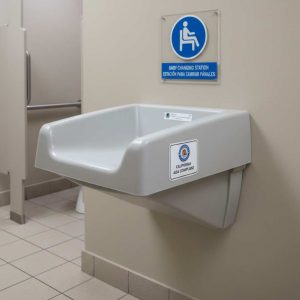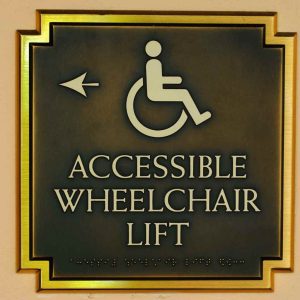Handicapped parking compliance refers to meeting the legal requirements for accessible parking under the Americans with Disabilities Act (ADA) and California’s Title 24 Building Standards Code. If you own, operate, or lease a facility open to the public in California, you’re legally responsible for ensuring your parking lot provides proper access to individuals with disabilities. This article explains how many accessible spaces are required, how they should be sized and placed, what signage is needed, and how to meet van accessibility rules—all based on verified ADA and Title 24 requirements.
TL;DR: California business owners are legally required to provide ADA- and Title 24-compliant accessible parking. This guide breaks down how many accessible spaces you need, how to size and position them, what signs are required, and what penalties you risk if you fail to comply.
Key Accessibility Requirements for California Parking Lots
-
1 accessible space required for every 25 total spaces
-
1 in every 6 accessible spaces must be van-accessible
-
Minimum width: 8 feet for car spaces, 9 feet for vans
-
Access aisles must be 5 feet wide (8 feet for vans)
-
Signage must be visible even when a car is parked
-
Route to entrance must be level, slip-resistant, and barrier-free
How Many Accessible Parking Spaces Do You Need?
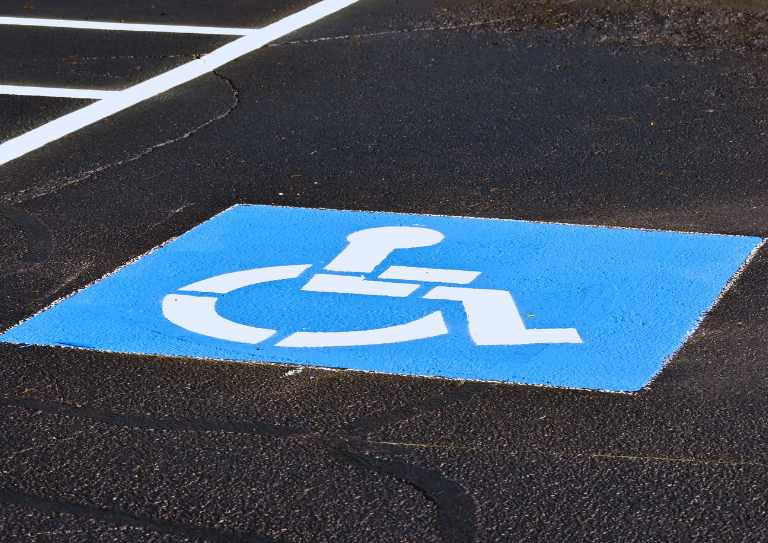
What is the ADA formula for required accessible spaces?
Below is a quick-reference table showing how many accessible parking spaces are required based on total spaces in your lot:
| Total Spaces | Required Accessible Spaces |
|---|---|
| 1–25 | 1 |
| 26–50 | 2 |
| 51–75 | 3 |
| 76–100 | 4 |
| 101–150 | 5 |
| 151–200 | 6 |
| 201–300 | 7 |
| 301–400 | 8 |
| 401–500 | 9 |
| 501–1000 | 2% of total spaces |
| 1001+ | 20 + 1 per 100 over 1000 |
-
1–25 total spaces: 1 accessible space
-
26–50: 2 spaces
-
51–75: 3 spaces
-
76–100: 4 spaces
-
101–150: 5 spaces
-
151–200: 6 spaces
-
201–300: 7 spaces
-
301–400: 8 spaces
-
401–500: 9 spaces
-
501–1000: 2% of total
-
1001+: 20 spaces, plus 1 for each 100 over 1000
These rules apply regardless of whether the parking is free or paid. California Title 24 may have stricter rules than federal ADA, so always cross-check with local building officials during new construction or renovation.
What Are the Dimensions and Layout Rules?
How wide and long must accessible spaces be?
Accessible parking spaces must be at least 96 inches (8 feet) wide for standard cars, with an adjacent access aisle at least 60 inches (5 feet) wide. For van-accessible spaces, the minimum width increases to 108 inches (9 feet), and access aisles must be at least 96 inches (8 feet) wide.
Where should accessible parking spaces be located?
Spaces must be located on the shortest accessible route to the facility entrance. If the nearest area isn’t level or contains steep terrain, select the next closest accessible area. The path to the entrance must be:
-
Free of stairs or abrupt level changes
-
Slip-resistant, firm, and stable
-
Clearly marked and unobstructed
This ensures individuals using wheelchairs or mobility devices can safely travel from the parking space to your building.
What Are the Van Accessibility Requirements?
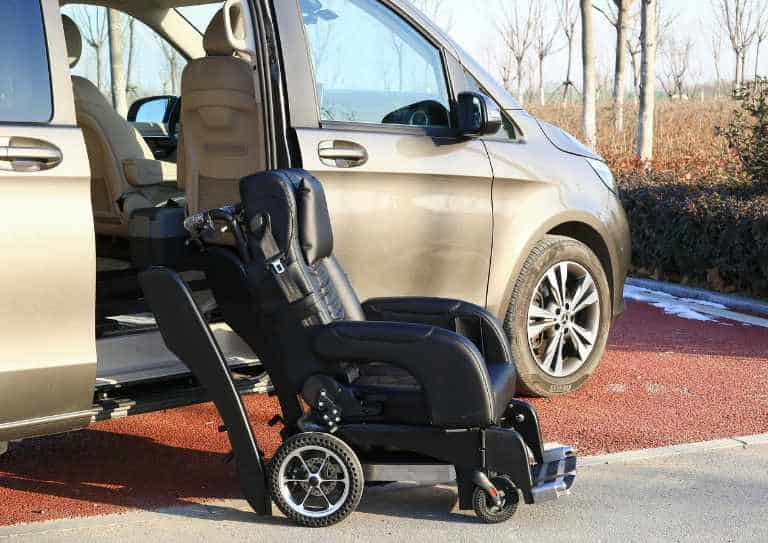
How many van-accessible spaces are required?
At least 1 in every 6 accessible spaces must be van-accessible. These should include:
-
A 9-foot-wide space with an 8-foot access aisle
-
Minimum vertical clearance of 98 inches at the space, along the access aisle, and along the vehicle exit route
Why does vertical clearance matter?
Many wheelchair vans are taller than standard vehicles. If your parking structure lacks sufficient overhead clearance, even compliant striping won’t meet code.
What Signage Is Required for Accessible Spaces?
What signs are legally required?
Each accessible parking space must have:
-
The International Symbol of Accessibility on a reflective blue-and-white sign
-
“Van Accessible” signage for designated van spots
-
Mounting height: Sign must be visible above parked vehicles, typically 60 inches minimum from the ground to the bottom of the sign
Signs should be placed at the front of each space and must be permanently installed. Temporary signs or pavement markings alone are not sufficient.
Compliance for Existing Facilities vs. New Construction
Are older buildings exempt from ADA parking rules?
No. All facilities open to the public must provide accessible parking, regardless of age. However, older buildings constructed before the 1990s may qualify for compliance under a “readily achievable” standard.
This means you’re required to remove barriers when it is easy to do so without much difficulty or expense. For example:
-
Re-striping a lot to add accessible spaces is often considered readily achievable
-
Installing new signage or repainting access aisles is usually affordable
Consult with a CASp inspection professional to determine what updates your facility needs.
What Happens If You Don’t Comply?
Are there penalties for non-compliant parking lots?
Yes. California imposes steep fines for violations of ADA and Title 24. Business owners can face:
-
Civil penalties starting at $4,000 per offense under California law
-
Federal ADA lawsuits, often costing tens of thousands in legal fees and settlements
Common enforcement triggers include:
-
Drive-by ADA lawsuits
-
Complaints filed with the California Department of Fair Employment and Housing
-
Local code inspections during renovation
Real Questions Business Owners Ask
Do I need accessible parking if my lot is small?
Yes. Even with just one customer space, ADA still applies. If you have 1–25 spaces, you must designate one as accessible.
Can I just put up a sign and call it compliant?
No. Signage is only one part of compliance. You must meet width, slope, access, and striping requirements under ADA and Title 24.
What if I lease my space and don’t own the building?
Both the landlord and tenant may be liable. ADA compliance responsibilities are shared based on lease terms and scope of control.
Take Action: Protect Your Business From Risk
Accessible parking is not optional—it’s a legal requirement. Whether you’re running a retail shop, restaurant, apartment complex, or medical office, making sure your parking lot is ADA compliant protects you from lawsuits, ensures customer safety, and meets California’s strict Title 24 standards.
If you’re unsure where your business stands, schedule a professional CASp inspection in California to assess your parking layout, signage, and access routes.
You can also explore our DSA accessibility services if your property is public-funded, or ADA website audits to ensure online compliance.
Sources:

Written by Mark Thompson
Mark Thompson is a passionate ADA Compliance Specialist with over 15 years of experience. His journey began as an environmental technician, where he recognized the importance of inclusive design. With a keen understanding of ADA regulations, Mark helps businesses navigate compliance challenges and create welcoming environments for all.
